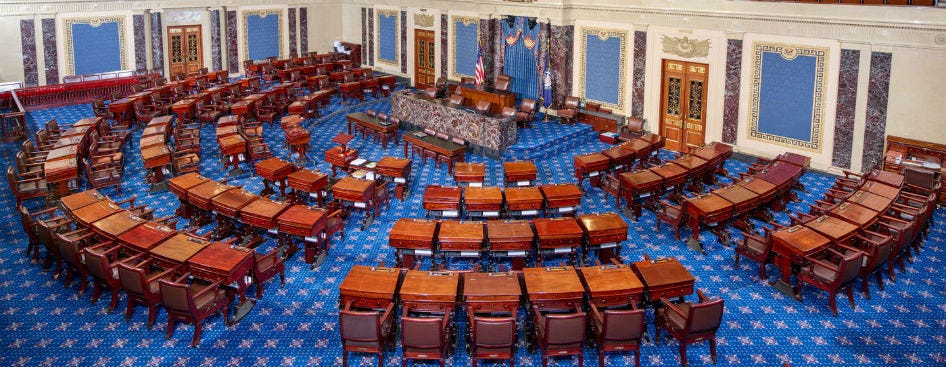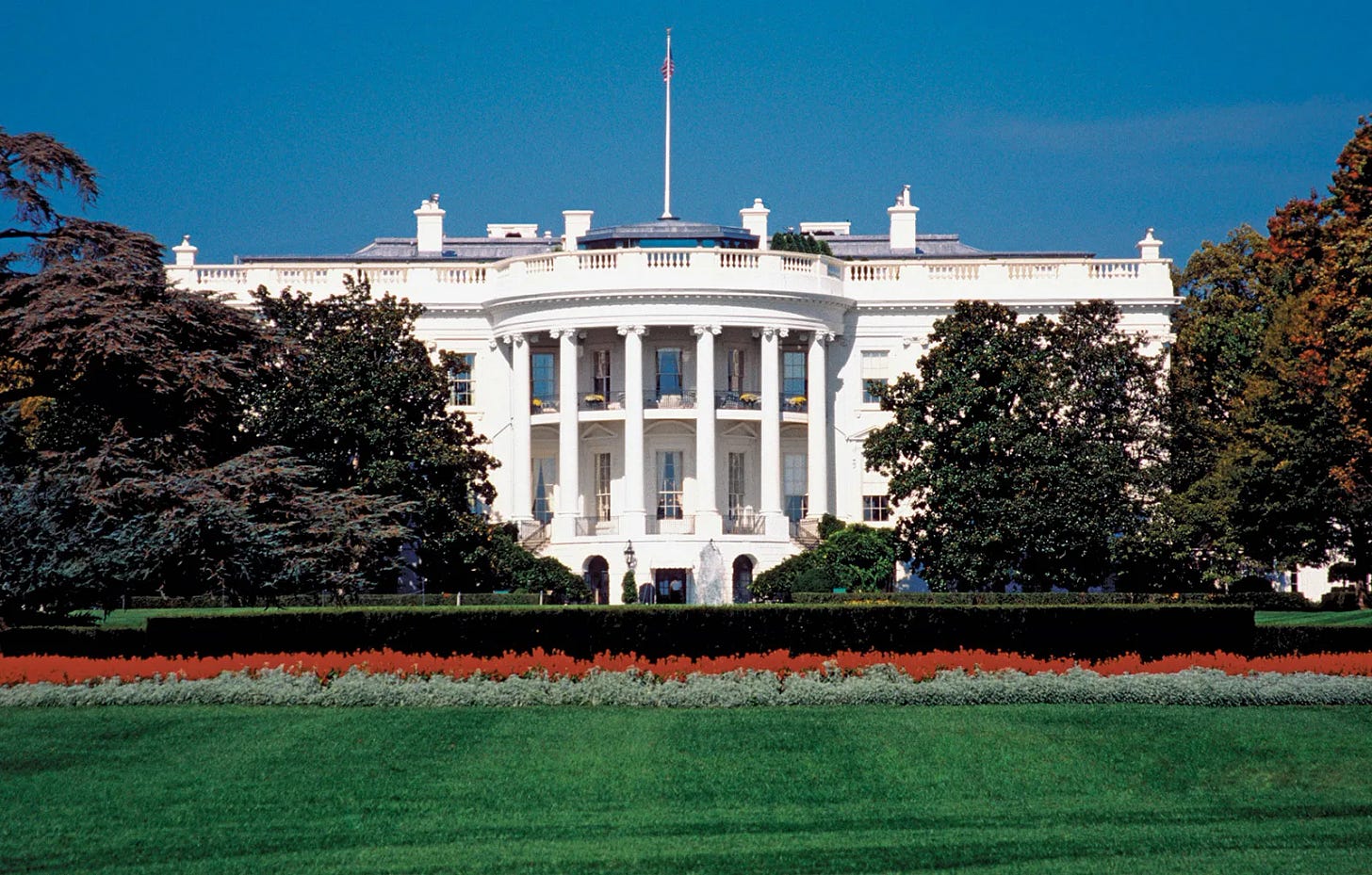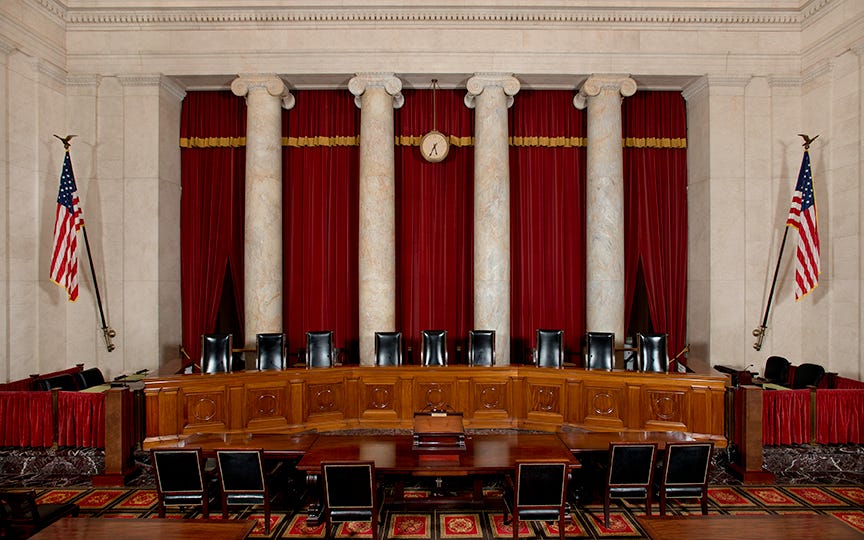What's Wrong With the Government Today? Part I
The train came off the rails sometime in the early 20th Century and has been going downhill ever since.
One of the biggest reasons our country is in such a bad place, is the fact that, the foundation of our government, the three branches, are not working like they were designed to. When the Founding Fathers designed the government, they set up three branches, who were supposed to be independent but co-equal, and provide checks and balances against the others. Just in case you have forgotten your basic civics class the three branches of our government are the Executive Branch, the Legislative Branch and the Judicial Branch, or to put it another way, the President, Congress and the Supreme Court. First I will outline how they are supposed to work and in Part II I will illustrate where it all went wrong.
What are the three branches of Government?
The Legislative Branch:
Established by Article I of the Constitution, the Legislative Branch consists of the House of Representatives and the Senate, when speaking of both houses they are referred to as Congress. By instituting Congress in the first article of the Constitution the founders asserted their belief that the legislative branch is the chief policymaking body. The legislative branch is the branch closest to the people, it is the branch of the federal government that the Founders maintained, most people would interact with. It is also the branch, the Founders believed, in which the danger of majority tyranny lurks. They were cautious, of this tyranny, because the House of Representatives are most likely to reflect the passions of the people. The fickle nature of the masses can lead to short-term fears or strong sentiments inflicting the will of the majority onto the minority. Therefore the members of the House are elected for terms of two years. The Senate, with its six-year term of office, was designed to be a more stable legislative presence than the House, where the passions of the people are lessened.
The House of Representatives:
Currently the House of Representatives, has 435 voting members as well as non-voting members from Washington DC, American Samoa, Guam, the US Virgin Islands, and the Commonwealths of Puerto Rico and the Northern Mariana Islands. The number of representatives is based on population of each state, with districts being redrawn every ten years after each census. Each member is elected for a two year term with about half of the chamber up for re-election during each election cycle. The members of the House elect a Speaker of the House who is the presiding officer of the chamber and is supposed to act as an impartial guide during the debates that are supposed to surround any bill that is brought to the floor.
In the Constitution there are several powers that exclusively belong to the House. Anything connected to revenue, in fact all revenue bills, both budget bills and tax bills, MUST initiate in the House. This was originally one of the House’s main powers. The power to enact revenue bills, also known as the power of the purse, is key to the checks and balances between the Legislative and Executive branches. The House also has the exclusive power to start impeachment proceedings, as we have seen to often lately.
The Senate:
The Senate has two members from each state, (currently 100) and until 1913 and the 17th Amendment, were originally appointed by each state’s legislators. The way it works now is that half the Senate is up for re-election during any cycle The Senate has the exclusive power to “advise and consent” on Presidential appointments, such as Cabinet positions, ambassadors and General Officers in the military. They also have to confirm any treaties the President wishes to sign, (except treaties that deal with trade, which would be taken up by the House). The Senate would also conduct the trial of any official impeached by the House.
There are also a large number of items for which the the two houses share power. Congress is given sole authority to enact legislation, the power to declare war, coin money, raise an army and navy, regulate commerce, establish rules of immigration and naturalization, and establish the federal courts and their jurisdictions, among others.
The Executive Branch:
According to the Constitution, the power of the Executive Branch is vested in the President of the United States, but we have gone far beyond the power that are actually enumerated in the Constitution. It mentions that the president will acts as head of state in dealing with foreign countries and Commander-in-Chief of the armed forces. It mentions that the President is responsible for implementing and enforcing the laws written by Congress, as well as appointing ambassadors and any other officials are deemed necessary to implement the law. The president is also allowed to appoint judges to any federal courts the Legislative Branch sets up. The president is allowed to grant pardons as well as addressing Congress every year regarding the state of the Union. The only mention of the Vice President is that if the president is unable to discharge his duties for whatever reason, than the power would devolve to the vice president. The President has a Cabinet which is supposed to advise him and should do the actual enforcement of all the laws on the books. Currently it consists of 15 departments; State, Treasury, Defense, Justice, Interior, Agriculture, Commerce, Labor, Health and Human Services, Hosing and Urban Development, Transportation, Energy, Education, Veterans Affairs and Homeland Security. I think that one of these departments should be eliminated and others consolidated to streamline the government. I would say that the Education Department should be eliminated. Education is a function better conducted at the state level rather than the federal level. Agriculture, Commerce, Labor, HHS, HUD, Transportation and Energy should all be rolled into the Department of the Interior and Veterans Affairs and Homeland Security should be nested under the Department of Defense. If the federal government got back to performing just the duties that are assigned to it in the Constitution, this system would work.
The Judicial Branch:
According to the Constitution, The Judicial Power of the United States, shall be vested in one Supreme Court, and in such inferior Courts as the Congress may from time to time ordain and establish. The Supreme Court is supposed to have original jurisdiction over all cases that arise between the states, between a state and people of another state, between people of the same state if the issue is regarding the land of another state or territory and under such Regulations as the Congress shall make. The Justices are appointed by the president for life and will remain in office as long as the exhibit “good behavior”, which is not made any clearer than that. The Constitution doesn’t specifically say that the Supreme Court has the duty to determine if a law is constitutional or not but most scholars agree that it was implied and the the historic case of Marbury vs. Madison etched judicial review in stone.
How it's supposed to work, a scenario.
Here is a hypothetical example of how the process should work. This example has no basis in reality, other than it is how it should work.
A representative from California on the Commerce Committee has been lobbied by a constituent about air pollution. The Rep introduces a bill that raises the Corporate Average Fuel Economy (CAFE) standards to 40 MPG by 2030. This would mean that all car manufacturers would have to insure that the average miles per gallon of their entire fleet of cars and light trucks (including SUVs and passenger vans) reach the 40 MPG level by 2030. All the representatives on the Commerce Committee READ the bill. It shouldn't be that long, or complicated, it should essentially say Be it enacted by the Senate and House of Representatives of the United States of America in Congress assembled. That the CAFE standard as figured by the average MPG of each manufacturer’s fleet be equal to or greater than 40 MPG by the 2030 fiscal year. If the goal is not met, that company or companies will incur a fine of $1.00 for each MPG they fall short. The Commerce Committee would then debate the merits of the bill and vote on it. If it passes, it goes before the entire House of Representatives and the process starts all over again. If the bill passes in the House, it goes to the Senate and they follow the same steps as the House. In our scenario, during the debate, a senator amends the bill, to increase the time for the auto companies to reach the CAFE standards to 2040. If the bill is passed with that amendment, than it returns to the House and they will vote on bill again including the amendment. If the bill passes again than it goes to the President to be signed. If it does not pass because of the amendment, than the bill would go to a conference committee to work out the differences. Once both versions of the bill are the same, it goes back to each chamber for another vote. Once the bill gets to the President he can do one of three things. He can sign it and it becomes law or he can veto the bill. If the bill is vetoed, the House can override the veto with a vote of 2/3 of the representatives, at which time the bill would become law. The other tactic the president has when it comes to bills is called the pocket veto. If there is just a few day left in a legislative session he can just not sign it until the session of Congress is over, killing the bill.
Once the bill becomes law it is the job of the Executive Branch to enforce the standard. A member of the Interior Department, because in a perfect America, the size of the government is kept to a minimum, meets with the auto companies and tells them they have until 2040 to meet the 40 MPG standard and leaves them to figure out how to do it. If they do not reach the goal, it would the Interior department’s job to levy any fines that might be written into the bill.
However in our scenario, Ford sues the federal government because they believe that the Constitution doesn't allow the Government to mandate an arbitrary standard on a public sector business. In the Federal District Court, they lose, and Ford appeals to the Federal Circuit Court. In that court the law is overturned as unconstitutional but the Interior Department appeals to the Supreme Court. After hearing oral arguments, from both the government and the auto companies, the Supremes ruled that the District Court was correct and the government does not have the right to assign a CAFE standard to a car manufacturer’s fleet.
That is how the system should work and I stress SHOULD. We are a long way past that point. Next week I will attempt to illustrate where and how it went wrong. That post is going to be much longer than this one because there are lots of moving parts to examine. I hope you enjoyed reading this and please feel free to share it with anyone who might be interested. Until next time, You stay classy Substack!
Chris











Great explanation of how our government should work. I was actually taught this in Civics class. Unfortunate, You don’t see that anywhere in today’s curriculum. Do our government leaders even know how it’s supposed to work???🤷♀️😏